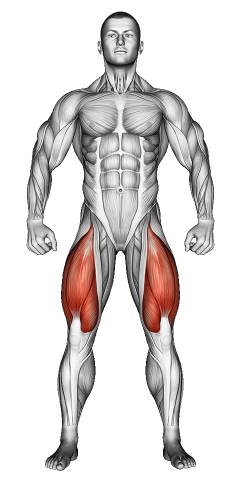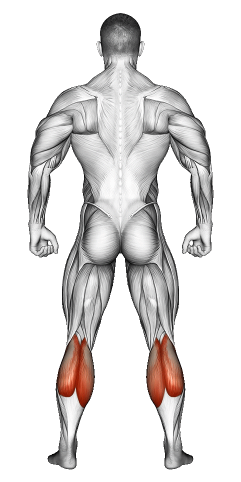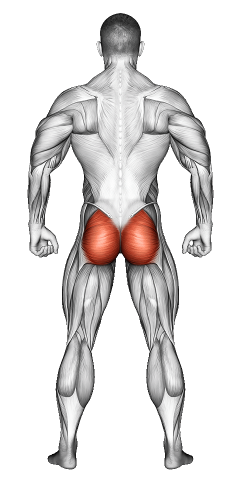Box Jump: Video Tutorial & Exercise Guide

Written By: Claude Michael
Updated: Oct 13, 2024
| Workout | Box Jump |
| Primary Muscle Group | Quads |
| Secondary Muscle Group | Calves, Glutes |
| Equipment Required | Box |
| Force Type | N/A |
| Mechanics | Compound |
| Exercise Type | Cardio/Strength |
| Difficulty | Beginner |
Box Jump: Video Tutorial & Exercise Guide
Box Jump: Step-by-Step Guide
- Step 1: Stand in front of a sturdy box or platform, feet shoulder-width apart. Keep your knees slightly bent and arms at your sides.
- Step 2: Lower into a quarter-squat position by bending your knees and pushing your hips back while keeping your chest up.
- Step 3: Swing your arms back as you load the movement, then explosively jump up, swinging your arms forward for momentum as you jump onto the box.
- Step 4: Land softly on the box with both feet, keeping your knees slightly bent to absorb the impact. Make sure your entire foot is on the box.
- Step 5: Stand up straight at the top of the box, then either step down one foot at a time or jump down carefully, depending on your fitness level.
Box Jump: Overview
The Box Jump is a plyometric exercise that builds explosive power in your lower body. It primarily targets the quads, glutes, hamstrings, and calves, while also improving coordination, agility, and cardiovascular fitness.
Box jumps are a great addition to any workout routine for athletes and fitness enthusiasts who want to develop power, speed, and jumping ability. It’s an excellent exercise for increasing leg strength and improving overall athletic performance.
Box Jump: Benefits
The Box Jump enhances explosive power, which is essential for sports that involve sprinting, jumping, and quick changes in direction. It also builds strength in your legs and improves coordination and balance.
This exercise increases cardiovascular endurance as it involves repeated powerful movements. By practicing box jumps regularly, you can increase your vertical jump height, improve speed, and boost overall athleticism.
Box Jump: Pro Tips & Advanced Techniques
Focus on using your arms to generate momentum and keep your core engaged throughout the movement. Land softly on the box with your knees slightly bent to absorb the impact. For an added challenge, try increasing the height of the box or doing box jumps in quick succession. Looking to push your limits? Try adding weights or a weighted vest for increased difficulty and strength-building benefits.
Box Jump: Progression Plan
Beginner
Intermediate
Advanced
Box Jump: Frequently Asked Questions (FAQs)
What muscles do Box Jumps target?
+Box Jumps primarily target the quads, glutes, hamstrings, and calves, while also engaging the core for stability and control.
How can I make Box Jumps easier?
+Start with a lower box or platform to build confidence and form. Focus on soft landings and step down instead of jumping down if needed.
How do I increase the difficulty of Box Jumps?
+To make Box Jumps more challenging, increase the box height, do faster reps, or add weights, like a medicine ball or weighted vest, to build more strength and power.
How often should I do Box Jumps?
+Incorporate Box Jumps 1-2 times per week as part of your lower-body or plyometric routine. They pair well with strength exercises like squats and deadlifts for overall leg development.
What common mistakes should I avoid?
+Avoid jumping down too quickly or landing with locked knees. Focus on a controlled, soft landing and ensure your knees are slightly bent to absorb the impact safely.
Share
Don’t Wish for It, Work for It – Join the FlexXP Newsletter Today!
Thank you for signing up for the FlexXP Newsletter!
This site is protected and the Google Privacy Policy and Terms of Service apply.


